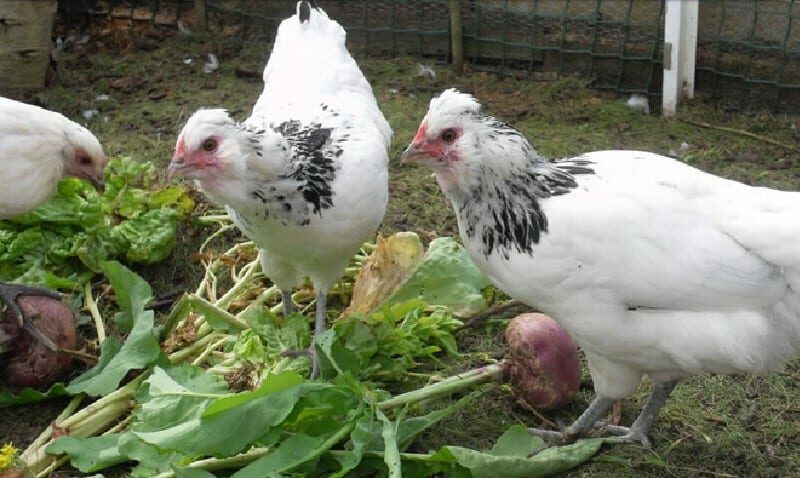By Spy Uganda
Raising chickens is a fun and rewarding experience. When you spend time with your birds, you’ll get to know their individual personalities. Sometimes they’ll even eat out of your hand! And just like people, your chickens will appreciate some variety in their diets. If you’ve been wondering what to feed chickens, you’ve come to the right place.

The Right Type Of Feed
Before delving into the treats you can give your birds, you’ll need to make sure you’re giving them the right kind of feed. If you’re starting out with baby chicks, it’s important to give them chick starter/grower. This type of feed is intended to make sure they get all the nutrition they need.

After about 18 weeks, you’ll need to switch them over to layer feed. This feed is made for adult birds and has enough calcium to support laying hens. Make sure you do this gradually–switching feeds abruptly can result in upset stomachs.

1. Scratch Feed

Scratch feed is a mixture of different grains and seeds–it usually contains wheat, cracked corn, barley, and sunflower seeds. It gets its name because chickens will peck and scratch to get to it. Scratch feed can encourage chickens to forage, and it’s great for reducing boredom.
However, scratch feed is not a replacement for proper chicken feed. It’s a nice treat and can encourage your birds to get more exercise, but your birds won’t be healthy if all they eat is scratch. Make sure you don’t overdo scratch, either. Corn can be fattening when fed in large amounts. You also don’t want your birds to avoid their regular feed in favor of scratch feed.
2. Mealworms
It might sound odd to buy bugs to feed your chickens. But mealworms are a great source of protein. A little protein boost can do a lot for your chickens, especially during molting season–it can help them grow feathers back faster.
You don’t need to buy live, wriggly mealworms to feed–dried mealworms will do just fine. And while they’re healthy in small amounts, don’t overdo it!
Mealworms are also high in fat, and they’re about 50 percent protein. An adult chicken’s diet should only be about 16 percent protein, so you won’t want to make mealworms a staple–between one and 10 mealworms per bird is plenty.
3. Cooked Oatmeal
When you think about what to feed chickens, oatmeal probably isn’t what first comes to mind. But oats are a major ingredient in chicken feed, so it makes sense that chickens like oatmeal, too. Warm oatmeal can be a great snack for them, especially in winter. There’s even been a USDA study showing that oatmeal improves general health in chickens.
Oatmeal is rich in protein and plenty of micronutrients that will keep your birds healthy. For a special treat, you can even cook it with fruit or stir in some of the dried mealworms mentioned above.
4. Bread
When offering chickens treats, it’s important to only give starches in moderation. However, bread is a popular treat among many chicken keepers. Feeding your pet chickens bread is a great way to get rid of stale bread. Make sure it isn’t moldy, though–mold can make your chicken sick.
Bread isn’t the healthiest thing on any list of what to feed chickens. Whole grain breads will provide more nutrients and energy. But even white bread is fine to offer as a treat once in a while.
5. Berries
Berries, and especially strawberries, are a major treat for chickens. They taste sweet and can give your birds an energy boost. Berries are also rich in antioxidants and vitamins. Even if you have a picky flock, almost any chicken will jump at the chance to eat some blueberries or strawberries.
If you have space, you can even plant berry bushes in the area where your chickens roam. They can jump up to get berries off the limbs. This may not be possible for everyone, but it’s a great way to add new dimensions to their foraging.
6. Pumpkin
When you’re deciding what to feed chickens, make sure to consider pumpkin. Pumpkin is a food that they can safely enjoy cooked or raw. For an especially easy dietary supplement, you can even offer them scoops of canned pumpkin.
You don’t just have to stick to the squash itself–pumpkin seeds are also safe to feed. Try to avoid commercially packaged seeds, as these usually contain high levels of sodium.
Pumpkin seeds act as a natural dewormer, and they work best raw. If you’re making pumpkin soup or carving a jack-o-lantern, try chopping raw seeds and giving them to your birds. You can also stir chopped seeds in with their feed.
7. Leafy Greens
If you’ve ever seen chickens roaming freely, you know they enjoy a variety of green foliage. If you want to offer some variety and more nutrient-rich options, try feeding them leafy greens. Kale, spinach, collards, turnip greens, and chard are all great choices.
Chickens probably won’t immediately gravitate to greens as they do to sweet foods like berries or dense starches like bread. However, greens can add some interest, especially to confined birds.
If your chickens are in a coop, try hanging bundles of greens inside. This will give them something to peck at, and the motion of a hanging bundle makes foraging a little more challenging.
8. Cold Watermelon
When deciding what to feed chickens, make sure you take the season into account. Chickens are generally hardy animals, but they sometimes find very hot weather difficult. This is especially true for large, heavy breeds like Cochins and Brahmas.
Shade and cold water can help chickens deal with the heat. But if you want to give them some variety, try offering cold watermelon. The seeds and fruit are safe for them to eat. And because of the high water content, it will help keep them hydrated.
9. Tomatoes
When considering what to feed chickens, a lot of chicken keepers choose something easy. With a few exceptions, chickens can eat most things you do. So if you’re slicing tomatoes for a salad or sandwich, don’t be afraid to offer them some.
Tomatoes are an especially fun treat for chickens. Between the many small seeds and larger chunks of flesh, tomato slices will keep your flock busy for a while.
10. Grapes
Grapes are a lot of fun to feed chickens. You might even catch them playing keep-away with each other. If your birds are picky about treats, this is a great treat to try. Most chickens seem to love them and gravitate towards them.
If you’re feeding grapes to smaller chickens or chicks, it’s a good idea to slice them. This will reduce their risk of choking, and it also makes the grapes a little easier to eat.








